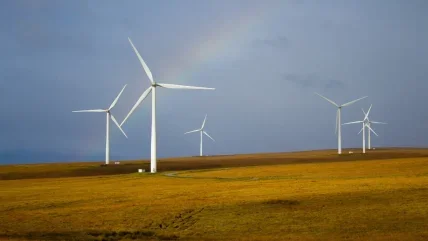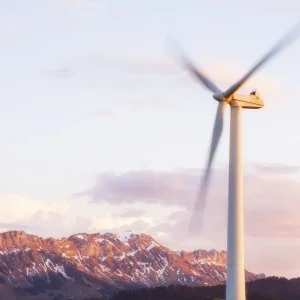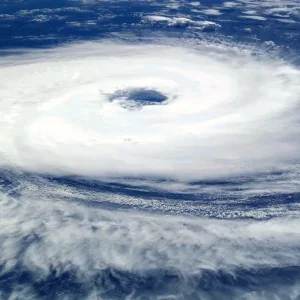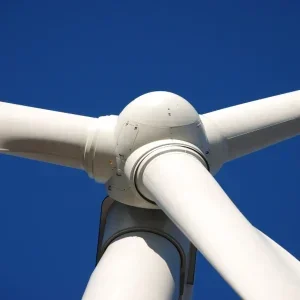
The wind technology industry, often hailed as a cornerstone of the global renewable energy transition, is facing increasing scrutiny over its environmental impact. While wind energy is pivotal in reducing greenhouse gas emissions, its rapid expansion has brought to light concerns about biodiversity loss and ecosystem collapse. As the industry continues to grow, it must navigate these environmental challenges to ensure a sustainable future.
Understanding the Impact of Wind Farms on Biodiversity
Biodiversity, the variety of life in the world or in a particular habitat or ecosystem, is crucial for maintaining ecosystem services that humans rely on, such as pollination, water purification, and climate regulation. The construction and operation of wind farms can have significant effects on local biodiversity through habitat destruction, disturbance, and fragmentation.
Habitat Destruction and Fragmentation
The establishment of wind farms often requires large tracts of land, leading to the destruction of natural habitats. This is particularly concerning in areas with rich biodiversity. The removal of vegetation and alteration of landscapes can displace wildlife, disrupt breeding grounds, and reduce the availability of food sources. Moreover, the fragmentation of habitats can isolate wildlife populations, making it difficult for them to find mates and access different parts of their territory.
Disturbance and Mortality
Wind turbines pose a direct threat to flying animals such as birds and bats. Collisions with turbine blades can result in high mortality rates, particularly for species that migrate through areas where wind farms are located. The noise and movement of turbines can also disturb wildlife, leading to behavioural changes and stress that can impact their health and reproductive success.
Impacts on Marine Ecosystems
Offshore wind farms, while advantageous in reducing land use conflicts, present unique challenges to marine biodiversity. The construction process, involving pile driving and seabed alteration, can damage marine habitats and disturb marine life. The operational phase can also affect underwater ecosystems through noise pollution and electromagnetic fields, which may interfere with the navigation and communication of marine species.
Mitigating Biodiversity Loss: Strategies and Innovations
To balance the benefits of wind energy with the need to protect biodiversity, the industry must adopt innovative strategies and best practices. Mitigation measures can be implemented at various stages of wind farm development, from site selection to operation and decommissioning.
Site Selection and Environmental Impact Assessments
Choosing the right location for wind farms is critical to minimising environmental impact. Environmental Impact Assessments (EIAs) are essential tools in this process. EIAs help identify sensitive habitats and species, allowing developers to avoid or mitigate adverse effects. Incorporating biodiversity considerations early in the planning stage can significantly reduce the ecological footprint of wind projects.
Technological Innovations
Advancements in technology offer promising solutions to mitigate biodiversity loss. For example, radar and thermal imaging can detect the presence of birds and bats, enabling turbines to be temporarily shut down when these animals are at risk. New blade designs and operational adjustments, such as altering turbine speed, can also reduce collision risks.
Habitat Restoration and Offsetting
In cases where habitat destruction is unavoidable, habitat restoration and offsetting can help compensate for biodiversity loss. Developers can engage in reforestation projects, create new habitats, or enhance existing ones to support displaced wildlife. These efforts can help maintain ecosystem services and promote biodiversity conservation.
Monitoring and Adaptive Management
Continuous monitoring of biodiversity impacts is crucial for adaptive management. By collecting data on wildlife interactions with wind farms, developers can refine mitigation measures and make informed decisions. Collaboration with conservation organisations and researchers can enhance monitoring efforts and ensure the effectiveness of biodiversity protection strategies.
Case Studies: Balancing Wind Energy and Biodiversity
Examining real-world examples can provide valuable insights into how the wind technology industry can address biodiversity concerns.
The Alta Wind Energy Centre, California
The Alta Wind Energy Centre, one of the largest onshore wind farms in the world, demonstrates the importance of comprehensive environmental planning. Located in a region with diverse wildlife, the project conducted extensive EIAs and implemented measures to protect local species. These included creating buffer zones around sensitive habitats and installing bird deterrent systems. Ongoing monitoring has helped minimise the impact on biodiversity while producing significant renewable energy.
The London Array Offshore Wind Farm, United Kingdom
The London Array, one of the largest offshore wind farms globally, illustrates the complexities of marine biodiversity conservation. During its construction, careful consideration was given to the potential impacts on marine mammals, fish, and seabirds. Mitigation measures included soft-start pile driving to reduce noise impact, creating artificial reefs to enhance marine habitats, and conducting post-construction environmental monitoring. These efforts have helped balance renewable energy production with marine ecosystem health.
The Role of Policy and Regulation
Effective policies and regulations are essential to guide the wind technology industry towards sustainable practices. Governments and regulatory bodies play a crucial role in setting standards and enforcing compliance.
International Guidelines and Best Practices
International organisations, such as the International Union for Conservation of Nature (IUCN) and the Convention on Biological Diversity (CBD), provide guidelines and best practices for integrating biodiversity considerations into renewable energy projects. Adhering to these guidelines can help wind energy developers minimise their ecological footprint.
National Regulations and Incentives
National governments can support biodiversity-friendly wind energy development through regulations and incentives. For instance, the United Kingdom’s Wildlife and Countryside Act 1981 provides legal protection for certain species and habitats, influencing wind farm planning and operation. Financial incentives for projects that demonstrate strong environmental stewardship can also encourage best practices.
Collaboration and Stakeholder Engagement
Collaboration between industry stakeholders, conservation organisations, and local communities is vital for addressing biodiversity concerns. Stakeholder engagement ensures that diverse perspectives are considered, leading to more effective and acceptable solutions. Transparent communication and participatory decision-making can build trust and support for wind energy projects.
Future Directions: Integrating Biodiversity and Renewable Energy Goals
As the wind technology industry continues to expand, integrating biodiversity conservation into renewable energy goals is paramount. The following strategies can help achieve this integration:
Enhancing Research and Development
Investing in research and development is crucial for understanding and mitigating biodiversity impacts. Studies on wildlife behaviour, habitat requirements, and the effectiveness of mitigation measures can inform better practices. Collaboration with academic institutions and conservation organisations can advance scientific knowledge and technological innovations.
Promoting Cross-Sector Collaboration
Cross-sector collaboration can drive holistic solutions to biodiversity and renewable energy challenges. Partnerships between the wind industry, conservation groups, and government agencies can foster the exchange of expertise and resources. Joint initiatives can develop and implement comprehensive strategies that address both energy and environmental goals.
Encouraging Sustainable Financing
Financial institutions have a role in promoting sustainable wind energy development. By prioritising investments in projects that adhere to strict environmental standards, financiers can incentivise biodiversity-friendly practices. Green bonds and other sustainable financing mechanisms can support projects that balance energy production with ecological conservation.
Raising Awareness and Education
Raising awareness about the importance of biodiversity in the context of renewable energy is essential. Education programmes for industry professionals, policymakers, and the public can highlight the need for sustainable practices. Increased awareness can drive demand for environmentally responsible wind energy projects and support for conservation efforts.
Conclusion
The wind technology industry stands at a crucial juncture where the imperative to combat climate change intersects with the need to preserve biodiversity. By recognising and addressing the environmental impacts of wind farms, the industry can contribute to a sustainable energy future that respects and protects the natural world. Through innovative technologies, effective policies, and collaborative efforts, the wind technology industry can play a leading role in harmonising renewable energy development with biodiversity conservation.






